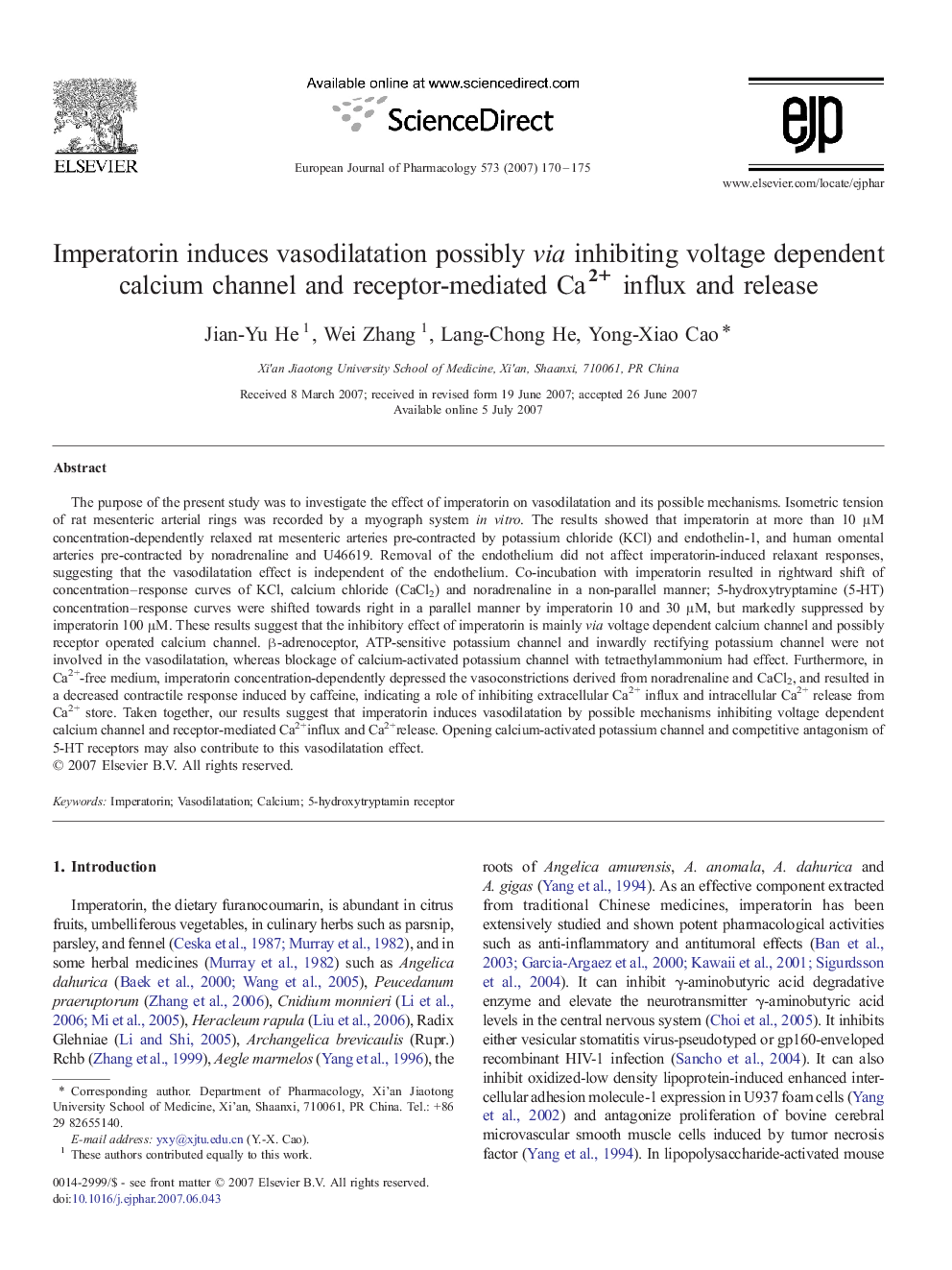| Article ID | Journal | Published Year | Pages | File Type |
|---|---|---|---|---|
| 2535880 | European Journal of Pharmacology | 2007 | 6 Pages |
The purpose of the present study was to investigate the effect of imperatorin on vasodilatation and its possible mechanisms. Isometric tension of rat mesenteric arterial rings was recorded by a myograph system in vitro. The results showed that imperatorin at more than 10 μM concentration-dependently relaxed rat mesenteric arteries pre-contracted by potassium chloride (KCl) and endothelin-1, and human omental arteries pre-contracted by noradrenaline and U46619. Removal of the endothelium did not affect imperatorin-induced relaxant responses, suggesting that the vasodilatation effect is independent of the endothelium. Co-incubation with imperatorin resulted in rightward shift of concentration–response curves of KCl, calcium chloride (CaCl2) and noradrenaline in a non-parallel manner; 5-hydroxytryptamine (5-HT) concentration–response curves were shifted towards right in a parallel manner by imperatorin 10 and 30 μM, but markedly suppressed by imperatorin 100 μM. These results suggest that the inhibitory effect of imperatorin is mainly via voltage dependent calcium channel and possibly receptor operated calcium channel. β-adrenoceptor, ATP-sensitive potassium channel and inwardly rectifying potassium channel were not involved in the vasodilatation, whereas blockage of calcium-activated potassium channel with tetraethylammonium had effect. Furthermore, in Ca2+-free medium, imperatorin concentration-dependently depressed the vasoconstrictions derived from noradrenaline and CaCl2, and resulted in a decreased contractile response induced by caffeine, indicating a role of inhibiting extracellular Ca2+ influx and intracellular Ca2+ release from Ca2+ store. Taken together, our results suggest that imperatorin induces vasodilatation by possible mechanisms inhibiting voltage dependent calcium channel and receptor-mediated Ca2+influx and Ca2+release. Opening calcium-activated potassium channel and competitive antagonism of 5-HT receptors may also contribute to this vasodilatation effect.
